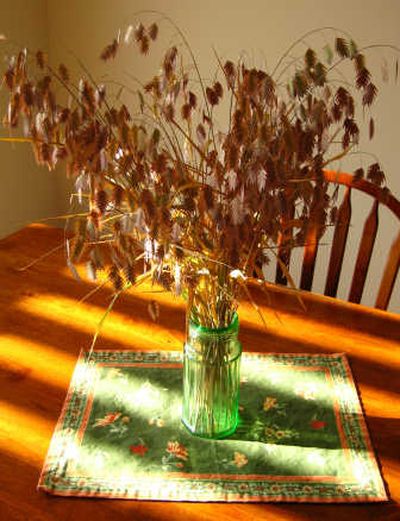Northern Sea Oats (Chasmanthium latifolium or Uniolia latifolia)

Today’s featured plant, Northern Sea Oats, look great in the garden and very cool in dried flower arrangements.
Also known by the names Inland Sea Oats and Indian Wood Oats, this perennial is one of the few ornamental grasses that grows well in the shade and prefers moist soil.
This plant is native to the Southeastern United States where it grows along river banks. But don’t let that dissuade you from giving it a try because it does well in sunny, drier locations, too. This grass is not bothered by pests or disease and is very easy to grow. It has an upright growth habit to about three feet and should be spaced two feet apart.
The plant’s wide, green leaves are similar in appearance to bamboo and turn a copper color in the fall, then brown during the winter. The best part of Northern Sea Oats is the attractive seed heads. They develop on graceful, arching stems and turn a reddish-bronze color in the fall. They even make a nice rustling sound when caught by a breeze.
The seed heads have a braided appearance, which is described in Sunset’s Western Garden Book as looking like “flattened armadillos.” While that colorful description conjures up quite an image, I think they look more like a chevron. Stems of seed heads will last indefinitely in dried flower arrangements.
I haven’t found the plant to be particularly invasive but it is wise to deadhead the flowers in the fall to avoid having an overabundance of volunteers the following year. Cut the old foliage to the ground in early spring before the new growth starts. The plants can be propagated from seed or by dividing the clumps in the spring.